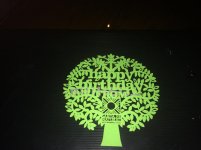Well it shouldn't be on high end ,,, few yrs back my friend had a loaner black boar 6 point I have 2 6 points , one a Dan Dicola and a Tommy Trott , in case you don't know he was taught by Bo Neports dad Gene ,, we compared the 3 cues and the Trott had the best points , I was rather shocked that it was better than the Boar infact the Boar was 3rd best
I happend to know the owner of that Boar who has the largest collection of Boars known to man kind and asked him how that cue 8 k plus ever made it by the trash can
He was pretty offended and replied it's hard to get even top and bottom ,, I looked him in the eye and said it was pretty sad that my 400 dollar cue 8 retail had better points than a 8 k cue
1[/QUOT
The lawyer???
Btw, let it be known, I am no big fan of beau Newports- just thought id add that in there just because----- I dont care for him at all. But I did respect the card game though!
Last edited:
